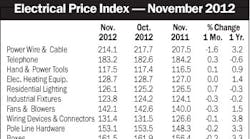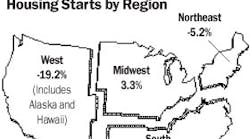Latest from Mag
With intentions of ramping up its production of zinc die-cast fittings, Bridgeport Fittings Inc., Stratford, Conn., purchased the “Regal” name and specific manufacturing equipment used to produce fittings from Regal Fittings Inc., City of Industry, Calif. Terms of the two transactions were not disclosed.
According to a Bridgeport, the primary reason for the purchase was to expand its plant capacity for the manufacture of Bridgeport fittings. “This purchase provided the quickest and most economical method of expanding our plant output to meet the demand for these products,” said Paul Suzio, president and chief operating officer of Bridgeport Fittings.
The move comes several months after Regal announced it would stop manufacturing zinc die-cast fittings because of high zinc prices. Bridgeport Fittings said the purchase does not include Regal’s California facility, which has been sold to investors. Bridgeport Fittings will also not hire Regal’s independent manufacturers’ representatives.
In a letter sent Aug. 4 to its manufacturers’ reps, Bridgeport Fittings’ Suzio said the company would manufacture just one line of fittings under the Bridgeport name. He also said one set of manufacturers’ representatives will continue to market Bridgeport Fittings’ products. “There are no plans to change any rep territories as a result of our recent purchase activity,” he said.
Gary Thomas, former president of Regal, and Jim Dean, Regal’s national sales manager, will not be employed with Bridgeport since Bridgeport did not buy the employees, Suzio said. Thomas told EM he does not have plans at this time for employment. Neither does Dean, but he said he was sure he would stay in the electrical industry.
Bridgeport Fittings purchased specific assembly and production equipment from Regal to manufacture its own line of fittings. That equipment will be converted to run Bridgeport fittings. Bridgeport bought the equipment from a liquidator that had purchased Regal’s manufacturing equipment. Bridgeport Fittings did not purchase any die-cast production equipment from Regal, because it purchased new zinc die-cast equipment compatible with its automated manufacturing lines.
Bridgeport Fittings is evaluating how and where it will use the Regal brand name, Suzio said.
“We have not finished reviewing our options, but we intend to use the brand name where it is appropriate to do so. ‘Regal’ appears on our Web site, and Regal’s Web site points to Bridgeport’s Web site,” he said.Suzio said Bridgeport Fittings had been talking with Regal Fittings about a possible purchase since it first announced it was going out of business in May, and that reaction from the industry to the news has been very favorable. Although Bridgeport Fittings put out a press release to the electrical industry, he said the company did “leak” the news to a few distributors ahead of time. He said specific market feedback includes the following comments: “aggressive action on the part of Bridgeport,” and “glad to see Bridgeport get the line.”
Mark Gibson, a manufacturers’ rep with Wood Dale, Ill-based Agents Midwest, represented Regal Fittings until July 15.
Although Regal was a big line for Agents Midwest, Gibson said the agency would spend more time on its other lines. Agents Midwest also recently took on Orbit Industries Inc., Los Angeles, a manufacturer of steel boxes and fittings. “Regal was a big part of our package,” Gibson said. “ It’s been a real ride. Now the challenge is to continue to be successful with other lines. We can take that time and spend even more time with (our other lines).”
Some companies have started to turn to steel instead of zinc because of the high zinc prices. Gibson said it will be interesting to see how that plays out and whether steel continues to be a viable alternative to zinc-die cast or whether it proves to just be a short-term alternative.
“Steel fittings are cheaper,” he said. “Labor-wise, the die-cast fitting is lighter and easier to use. That’s a choice he (the contractor) has to make depending on how high zinc goes. As that settles down a little bit, it will be interesting to see the long-term effects of that. Will this just be a little cycle where right now we use steel, but then die-cast will come back?”

